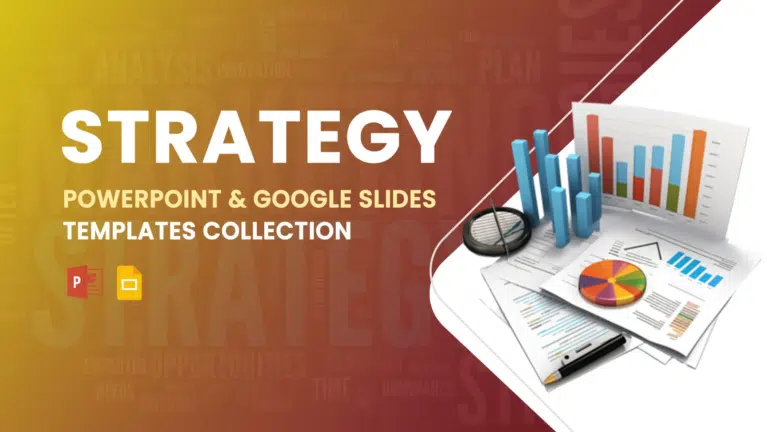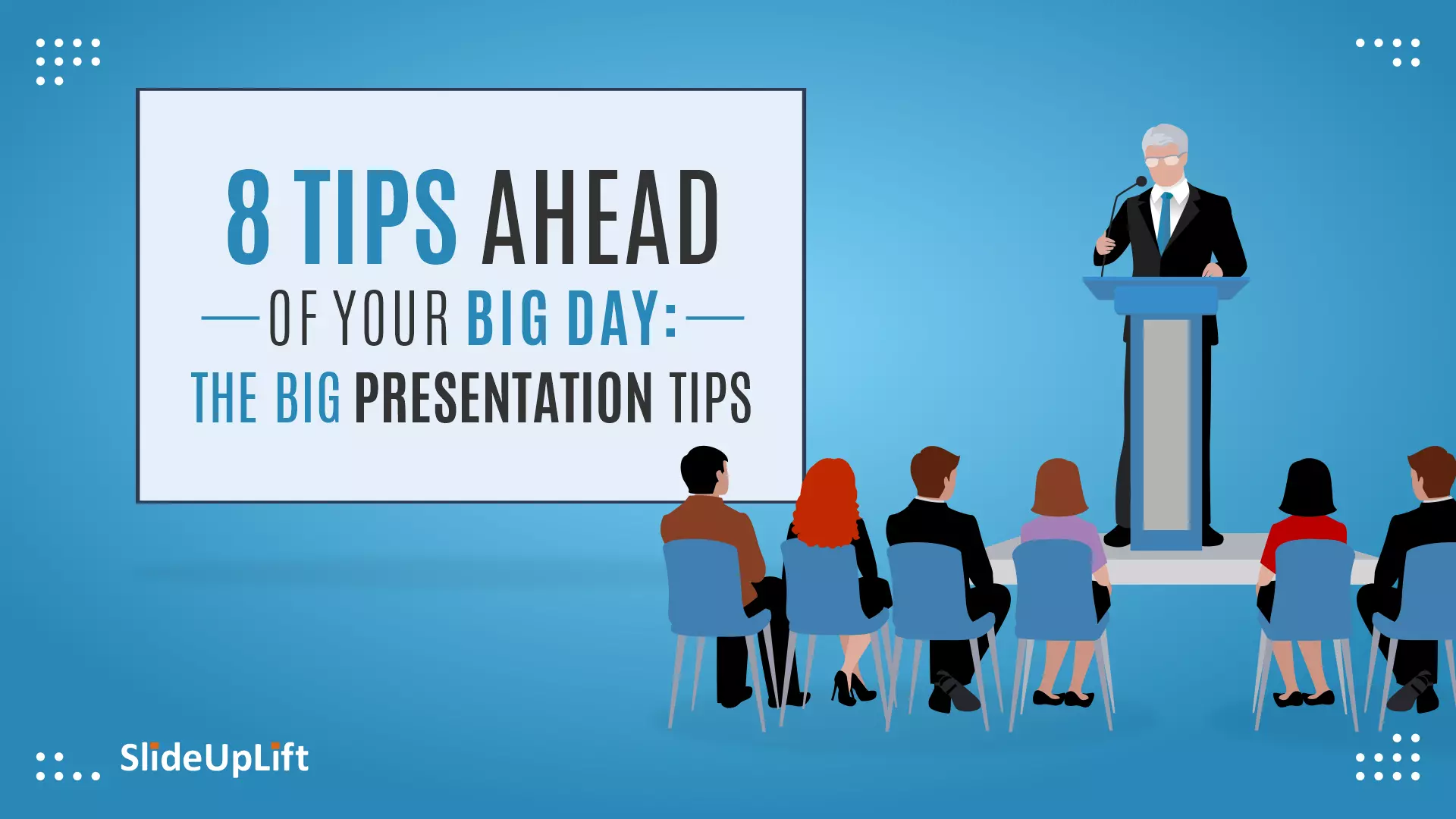Boost Your Presentation Skills: Tips for Better Results
Do you feel exhausted from giving uninteresting and unproductive presentations?
Do you feel like your presentation skills are holding you back from achieving success professionally and personally?
You’re not alone. Many people struggle with how to improve their public presentations, as it is a crucial aspect of effective communication and an important soft skill.
Good presentation skills are crucial for individuals of diverse backgrounds, including students, professionals in the business industry, and anyone seeking to make a significant impact with their PowerPoint design ideas. It can help you persuade, influence, and inspire your audience, ultimately leading to success.
In this blog, you will discover ten practical methods you can implement today to improve your PowerPoint presentation skills. These techniques will provide you with all the necessary tools to enhance your oral presentations and take them to the next level.
By the end of this blog, you’ll have actionable tips and strategies you can implement immediately to improve your presentation skills and deliver impactful and successful presentations.
So, let’s start on the journey to improve presentation skills and make your next presentation memorable.
What are Presentation Skills?
Presentation skills are a set of abilities that enable an individual to effectively communicate information, ideas, and concepts to an audience. These skills are essential in various professional and personal settings, as they help convey messages, engage the audience, and persuade them to take action.
Mastering presentation skills can significantly enhance one’s career prospects, boost self-confidence, and improve overall presentation skills in communication.
What Is The Importance of Presentation Skills?
- Success in today’s rapidly evolving business landscape hinges on effective verbal communication. One essential aspect of presentation skills is communication – the ability to deliver engaging and informative presentations.
- This article from Central Connecticut State University outlines how strong presentation skills can lead to career advancement, effective communication, and leadership opportunities. Presentation skills are vital for conveying information clearly and concisely, building rapport with the audience, showcasing professionalism, and enhancing personal and professional growth.
- By mastering the art of presenting, one can improve one’s confidence, self-esteem, and overall effective presentation skills in communication. This, in turn, leads to better interpersonal relationships in personal and professional settings.
How to Improve Presentation Skills
Want to level up your presentation game? Whether you’re prepping an informative speech the night before or standing in front of an audience, the right approach makes all the difference. In this guide, we’ll break it down into three power-packed parts—how to prepare like a pro, what to do on the big day, and smooth tricks to wow your crowd while presenting. Let’s turn nerves into confidence and slides into stories!
Behind the Scenes: How to Prep for a Flawless Talk
Good preparation is the secret to nailing your presentation. A clear plan boosts your confidence and makes everything run smoothly. Organize your key points, use note cards to stay on track, and add visuals to keep your audience engaged. Get to know the room and practice a bunch to feel calm and ready.
Self-awareness:
Confidence is everything when presenting. Imagine yourself doing great, practice in front of a mirror, and take deep breaths to ease nerves. Be yourself on stage to shine, and remember—your audience is rooting for you and excited to hear what you have to say.
Organize Your Material in the Most Effective Manner to Attain Your Purpose:
Plan your content clearly to hit your goal. Jot down what you want to say for each slide to keep your thoughts organized smoothly. This helps you stay on track without reading word-for-word, making your delivery feel more natural and confident. With clear points ready for each slide, you’ll glide through your presentation with ease. Plus, it keeps your connection with the audience strong and engaging.
Ensure you know how to use presentation tools:
Before stepping up to present, make sure you’re fully comfortable with the software you’re using—whether it’s PowerPoint, Google Slides, or Keynote. Learn both the basics and the extras: how to add images, videos, charts, and animations to make your slides pop. Practice navigating smoothly between slides using shortcuts or a clicker, and get familiar with presenter view so you can see your notes, track time, and stay one step ahead. The more fluent you are with your tools, the more polished and confident you’ll appear.
Be prepared: Practice makes perfect:
Rehearsing a ton makes you feel ready and confident. Every practice session helps you own the stage and calms your nerves. Picture success and connect with your audience through eye contact and body language to make your talk shine. Ask for Feedback and Keep Growing: Get better by hearing what others think. Ask coworkers, mentors, or friends for honest input on your talk. Try workshops, presentation skills training sessions, or a presentation skills course, too—they’re packed with pro tips and practice to level up your skills.
Know Your Audience. Your Speech Is About Them, Not You:
To truly connect, take the time to understand who you’re speaking to. If possible, chat with a few audience members beforehand—it’s a great way to get a feel for their interests and expectations. Shape your message around their interests and needs, not just your own. When you connect with what matters to them, they’ll listen and remember you.
Learn from Great Speakers:
Watch awesome speakers to pick up tips. Check out TED Talks, online courses, or even confident presenters you know. Notice how they kick things off, explain tricky stuff, and connect with the crowd. Borrow what clicks with you and make it your own.
Step Up and Start Speaking:
One of the most effective ways to conquer the fear of public speaking is by actively seeking out speaking opportunities. Take initiative within your team—volunteer to present project updates or lead small meetings. Join groups like Toastmasters, where you can practice in a supportive, structured environment. These experiences not only help you get comfortable with being in front of a crowd but also build real, lasting confidence and improve your speaking skills. The more you speak, the more natural it feels—and soon, stage fright will be a thing of the past.
Presentation-Day Mindset: What to Do While You’re on Stage?
Overcoming the fear of public speaking is easier with practice and the right approach. To face your public speaking anxiety, embrace nerves, use confident body language, and share stories to connect with your audience and shine on stage.

Nervousness Is Normal:
Feeling jittery before speaking? That’s okay—everyone does. Take slow, deep breaths to relax, strike a confident pose, or take a quick walk to shake off the nerves. Picture yourself crushing it—it helps! With good preparation, these tricks will have you walking in calm, confident, and ready to shine.
Use of gestures, postures, and facial expressions:
Your body talks, too! Use hand gestures, postures, smiles, and eye contact to show confidence. Practice and reflect to keep improving.
Grab Attention at the Beginning, and Close with a Dynamic End:
Start with a bold opener to hook your audience. End with a strong message they’ll remember. Picture yourself nailing it to boost confidence.
Choose the right angle when standing during a presentation:
Stand tall and face your audience with an open posture. It makes you look confident and keeps people engaged. Try practicing in front of a mirror.
Avoid distractions:
Stay focused and keep your audience’s attention. Make eye contact and move with purpose. A clear head helps your message shine.
Use Humor, Storytelling, and Effective Language:
Share funny or personal anecdotes to connect with your audience. Speak clearly and with heart. It makes your talk feel real and memorable.

Stage Presence:
Owning the stage means showing up with energy, confidence, and control—it’s about commanding attention without demanding it. Start with a positive mindset and solid preparation so you walk in knowing your material. When you’re fully present and engaged, your audience will be too.
Use Audiovisual Aids Wisely:
Keep slides or presentation visuals simple and tied to your message so they don’t steal the show. Practice with visual aids to make sure they flow smoothly and keep the focus on you.
Presentation Day Checklist: Points to Stay on Track
Getting ready for a presentation? Small things can make a huge impact. Show up early to get comfortable with the room, share personal stories to connect with your audience, prepare an interview presentation, and use confident body language. Let’s explore some additional tips below to boost your skills.
Arrive early:
Show up early to check the tech, tweak your setup, and calm your nerves. It gives you time to get comfy with the space and even chat with a few audience members before you start.
Engage with the audience:
Connect with your audience to make your talk feel alive. Look them in the eye, use open gestures, and share a fascinating story to grab their attention and keep them hooked.
Use Strong Delivery and Body Language:
It’s not just what you say—it’s how you say it. Speak clearly with energy and skip filler words like “um.” Pause for impact. Make eye contact, use natural gestures, and stand tall to come across as confident and connect with your audience.
Become familiar with the layout of the room:
Get to know the room before you speak—where people sit, how the tech works, and how the lights feel. It helps you move easily and feel more confident when you’re up there.
Listen to the presenters ahead of you:
Pay attention to the speakers before you to pick up tips and avoid slip-ups. Active listening to them helps you read the crowd’s vibe and tweak your style to fit the mood.
Bring Along Something to Share:
Make your presentation more engaging by bringing a tangible item related to your topic. If you’re talking about a product—say, a new perfume—carry a sample for your audience to experience. It not only grabs attention but also makes your presentation more attractive.
Wrapping It Up
Great presentation skills can make a big difference in your personal and professional life. We understand that honing your presentation skills takes time, but it pays off. Start using these tips now to make effective presentations and reach your goals.













